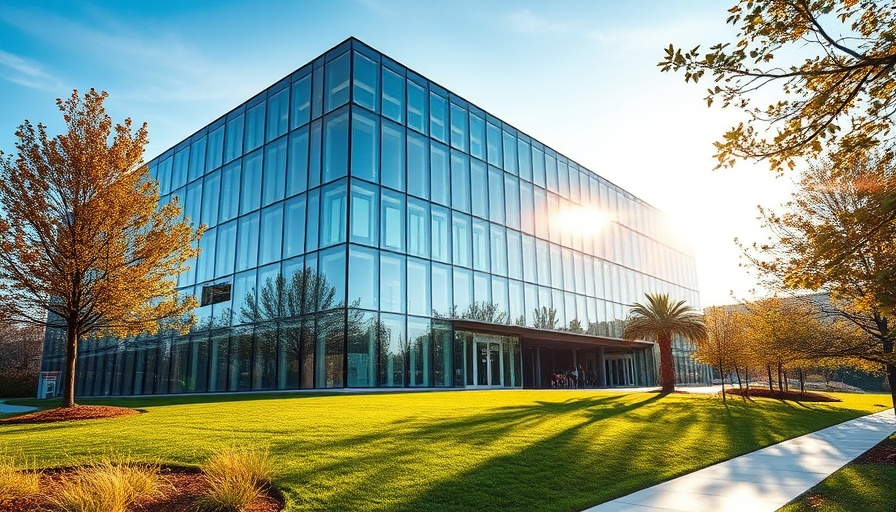
Revolutionizing Facades with Thin Glass Technology
Embry-Riddle Aeronautical University in Daytona, Florida, recently unveiled an innovative facade that has everyone talking. This new glass exterior is not only visually striking but also remarkably thinner than a dollar bill. The project's success showcases the possibilities of modern materials and advanced design techniques, making a compelling case for incorporating such technologies in both commercial and residential structures.
Multi-Dimensional Aesthetics: The Role of Dichroic Glass
The vibrant and colorful facade comes from the integration of dichroic glass panels manufactured by Pulp Studio. What’s unique about this material is its ability to change color depending on the angle of light and the viewer's perspective. This phenomenon provides an ever-changing visual experience, making buildings stand out significantly in their environments. Users can expect a dynamic aesthetic that ensures the building makes a bold statement no matter the time of day.
Designing for Durability and Functionality
While aesthetics are crucial, the choice of the lamination method used to apply the dichroic layer between sheets of glass is equally important. This method not only enhances the durability of the glass but also ensures the color transitions remain vibrant over time. This development reflects an essential trend in construction technology, where beauty and functionality now go hand-in-hand.
Implications for Future Construction Projects
The advancements showcased in this project could have far-reaching implications for both new builds and renovations in various sectors. For property developers looking for cost-effective, sustainable options that attract tenants or buyers, thinner glass facades serve multiple purposes: they enhance the building's visual appeal, are often more energy-efficient due to better insulation, and may even reduce material costs related to traditional building practices.
Connecting with Community Values
From a community development perspective, buildings like the one at Embry-Riddle not only contribute to a city’s modern look but also reflect a city’s commitment to innovative design and sustainability. As businesses and property owners alike become more health-conscious and environmentally aware, such responsible advancements in architecture emphasize care for both user experience and ecological implications.
In conclusion, the beautiful new facade at Embry-Riddle Aeronautical University serves as a reminder that the future of construction lies in marrying advanced technology with design. As the demand for such innovative and sustainable features grows, so does the opportunity for businesses in the construction sector to increase their market potential. If you are a business owner, property developer, or facility manager, consider how embracing such innovations can set your projects apart.
 Add Row
Add Row  Add
Add 




 Add Row
Add Row  Add
Add 

Write A Comment